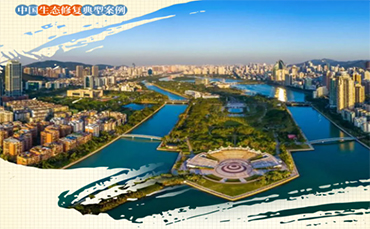


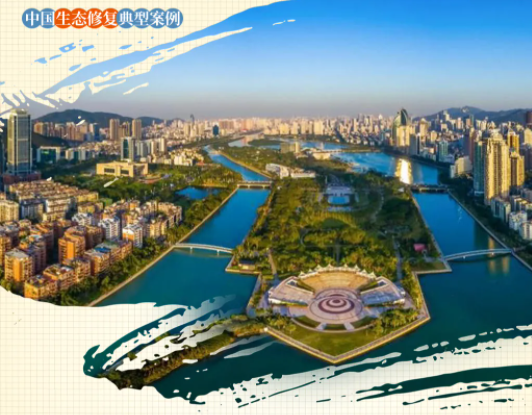
The 15th meeting of the Conference of the Parties to the United Nations Convention on Biological Diversity (COP15) kicked off in Kunming, Southwest China's Yunnan Province, on October, 11 and on the afternoon of October 14, 2021, the Ministry of Natural Resources released “Typical Cases of Ecological Restoration in China” (including 18 cases) at the Theme 4 - “On Ecological Protection and Restoration Based on Natural Solutions” of Ecological Civilization Forum of COP15. The 18 cases are selected from the 127 nominated ecological restoration projects by relevant ministries, provincial natural resources authorities and the commonweal organizations. These cases aim to show the diversity of ecosystem, typical problems on ecosystem and comprehensive methods of ecological restoration.
Case 7: Ocean environment management in Dongtou, Wenzhou
Dongtou in Wenzhou city, Zhejiang province, is an island county with 302 islands and 351 km length of coastline. The administrative area of Dongtou is 2862 sq. km and 95% of that is sea area. With the rapid economic growth, the conflicts between ocean resource development and protection were getting increasingly serious. In 2016, as one of the eight pilot cities of blue bay action, Dongtou started ocean environment management and developed ecological ocean industries. The ocean became an important resource for island residents. The first phase of blue bay action focused on building Dongtong national ocean park, with an investment of 476 million RMB. To recover the ecosystem of marine-terrestrial interlaced zones, this project demolished the manmade seawalls and reconnected the habitats on land and in ocean. This project not only contributes to the environment protection, but also promotes noticeable economic growth of Dongtou. In the past five year, the average growth rate of GDP in Dongtou reached 8.2%, ranking the first in Wenzhou.

The past and present photo of the bay area of Dongtou
Case 8: Protection of the golden monkey in Yunnan Province
The golden monkey in Yunnan is a kind of endangered species and highly protected in China. Although the number of golden monkey has increased from 1500 to more than 3000 in the past 20 years, its living environment was still facing many challenges. To better protect the golden monkey, the local government associated with 13 agencies to establish a comprehensive protection network and the monitoring system of biodiversity. Since the protection network was funded in 2019, more than 1.9 million RMB have been invested in protecting the golden monkey. The 200 sq. km of monkey habitat, distributed outside the established nature reserves, has been effectively protected, and more than 400 hectares habitat have been restored. More than 400,000 tons of carbon dioxide can be captured and sequestrated over the next decade. This case is an good example of China’s efforts on field animal protection.
Case 9: Ecological remediation of Yundang lake in Xiamen
The Yundang lake, located in the west of Xiamen island, used to be a port. In the 1970s, due to land reclamation and construction of dam, the port changed to be a lake with a water area of 1.6 sq. km. Because the lake didn’t have water exchange, in the 1980s, it was polluted heavily. From 1988, the local government of Xiamen started to focus on control water pollution and restore the ecosystem in Yundang lake. Thanks to the continuous efforts of ecological remediation, the Yundang Lake has been converted from a polluted lake to the landmark of the city.

The Yundang lake after ecological remediation
Case 10: Ecological remediation of Tongluo mining mountain in Chongqing
Tongluo mountain, as one of the "four mountains" in Chongqing, it is an important ecological conservation area and ecological barrier, protecting the ecological environment safety of the Yangtze River. Tongluo mountain has rich limestone resources, so the gravel mining activities were very active in the 1990s. However, large-scale open-pit mining activities caused serious land damage, vegetation damage and ecological degradation. From 2010 to 2012, Chongqing made great efforts to close the quarries, leaving 41 abandoned pits in the Tongluo mountain. After that, Chongqing focused on redevelop the abandoned pits as tourism attractions and made the mining mountain a new ecological tourism site. These efforts not only contribute to ecological restoration, but also increase local residents’ income. The Tongluo mountain becomes a mountain of green and clear water, as well as a mountain of gold and silver.
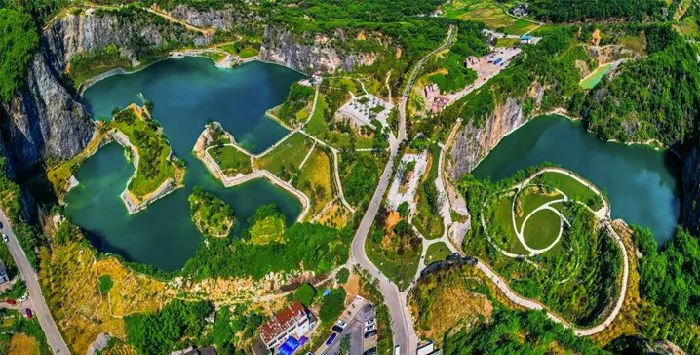
Tongluo mountain park
Case 11: Mangrove afforestation in Zhanjiang, Guangzhou
Zhanjiang Mangrove National Nature Reserve in Guangdong is the largest nature reserve in China. In recent years, the Sanctuary Authority not only focused on the existing mangrove forest protection, but also steadily advanced the afforestation of mangrove and increased the area of mangrove. Zhanjiang has explored a mechanism of changing the mangrove ecological value into profits. On June 8, 2021, the Sanctuary Authority, the Third Oceanographic Research Institute of the Ministry of Natural Resources and the Beijing Entrepreneurs Environmental Protection Foundation officially signed the first certified agreement to trade 5880 tons of carbon emission credit. The Beijing Entrepreneurs Environmental Protection Foundation used this carbon emission credit to balance its own carbon emission, and the Sanctuary Authority used this income to advance the protection on mangrove. This case encouraged social capitals to invest on ecological restoration and provide a way to achieve carbon balance.
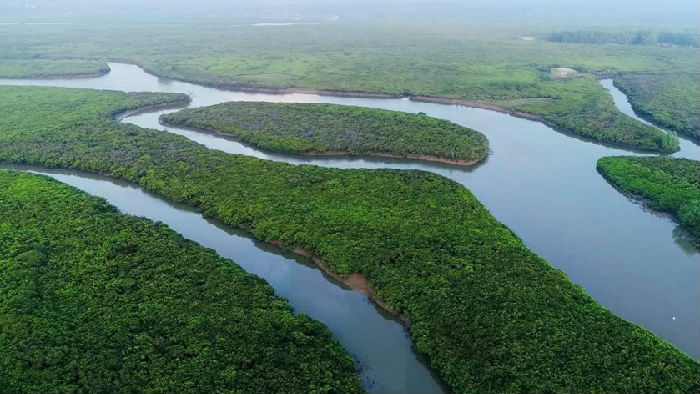
Mangrove National Nature Reserve in Jinjiang
Case 12: Ecological restoration of Xiaoqinling gold deposits in Henan Province
Henan Xiaoqinling National Nature Reserve is located in the westernmost part of Henan Province. It is an important gold deposits in China, but due to the human activities of gold depositing, the ecosystem and natural environment were seriously destructed. In recent years, Xiaoqinling National Nature Reserve applied a series of ecological restoration projects, such as close the gold desposits, remove mining facilities, clean the mining wastes and re-planting grass and trees. Now, the number of wild animals increase quickly, the water become clear and air is fresh again. The local industries has transformed to be green industries. Its annual increment of local industrial and agricultural values is more than 1 billion RMB. These ecological restoration projects have made a historic change to Xiaoqinling National Nature Reserve.
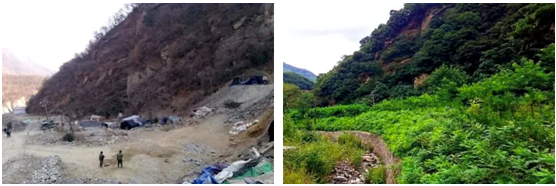
Photo of Dahudongyu No. 26 deposit before and after ecological restoration
Photos from the Ministry of Natural Resources(Wechat official account)
Source: <https://mp.weixin.qq.com/s/6MbYcGZHvQ6_1InxgGI-Ww>
Edited and translated by Jia Mengyuan